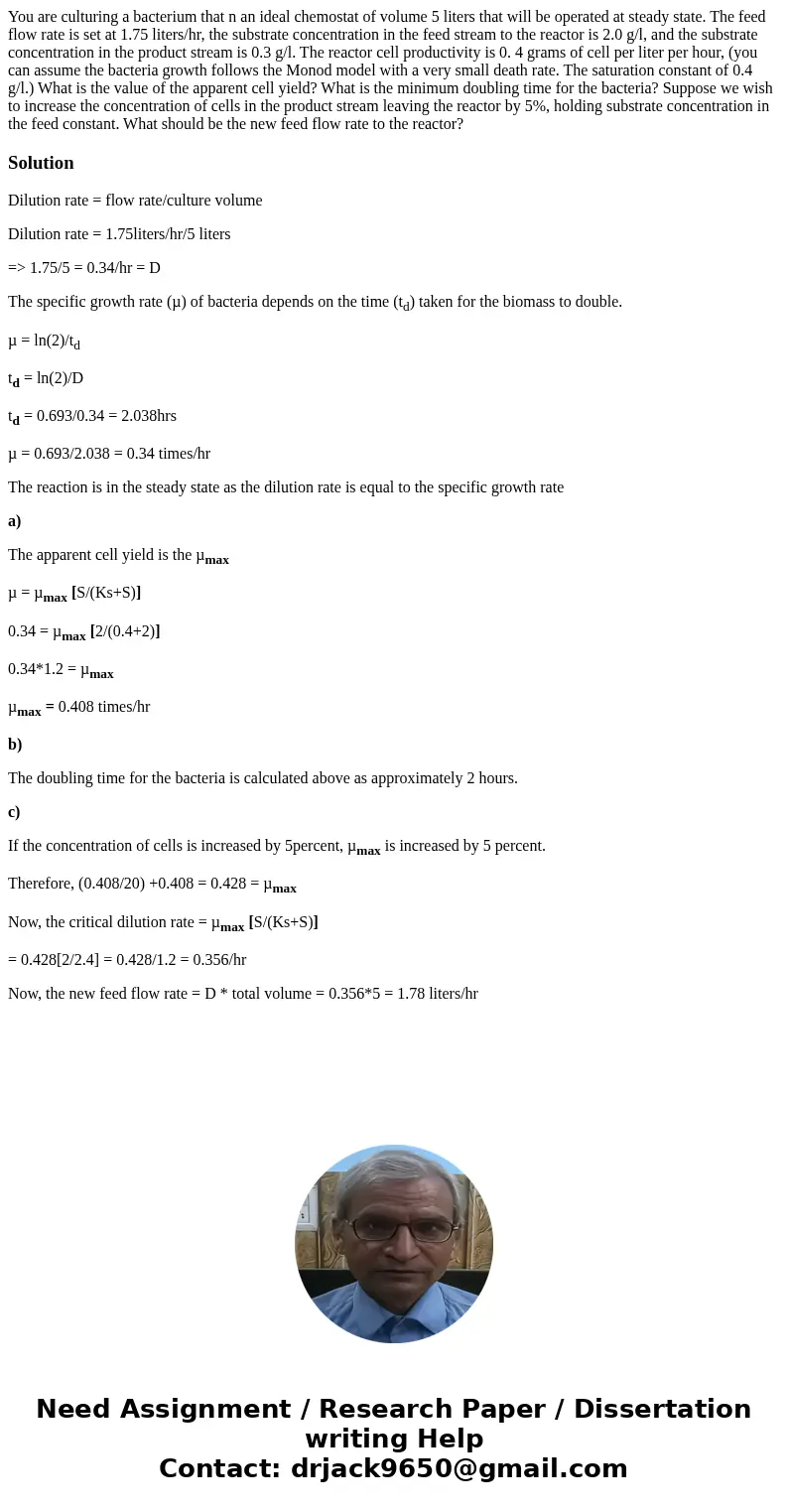You are culturing a bacterium that n an ideal chemostat of v
Solution
Dilution rate = flow rate/culture volume
Dilution rate = 1.75liters/hr/5 liters
=> 1.75/5 = 0.34/hr = D
The specific growth rate (µ) of bacteria depends on the time (td) taken for the biomass to double.
µ = ln(2)/td
td = ln(2)/D
td = 0.693/0.34 = 2.038hrs
µ = 0.693/2.038 = 0.34 times/hr
The reaction is in the steady state as the dilution rate is equal to the specific growth rate
a)
The apparent cell yield is the µmax
µ = µmax [S/(Ks+S)]
0.34 = µmax [2/(0.4+2)]
0.34*1.2 = µmax
µmax = 0.408 times/hr
b)
The doubling time for the bacteria is calculated above as approximately 2 hours.
c)
If the concentration of cells is increased by 5percent, µmax is increased by 5 percent.
Therefore, (0.408/20) +0.408 = 0.428 = µmax
Now, the critical dilution rate = µmax [S/(Ks+S)]
= 0.428[2/2.4] = 0.428/1.2 = 0.356/hr
Now, the new feed flow rate = D * total volume = 0.356*5 = 1.78 liters/hr

 Homework Sourse
Homework Sourse